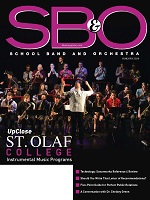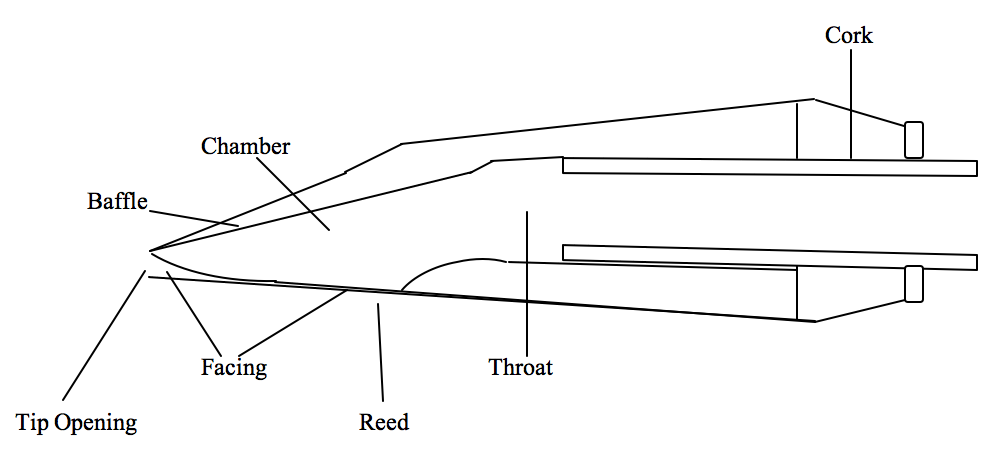First steps for beginning students
Teaching students to play the clarinet is often both rewarding and challenging. A student’s natural enthusiasm when beginning a musical instrument is hard to match. During the first few weeks, students are introduced to embouchure, breath support, and playing their first notes on the clarinet. Some students pick up each new fundamental easily, while others require additional help. Young students are especially flexible in the beginning, allowing instruction that is not grasped to be set aside and replaced with methods that produce better results. If possible, consider meeting a beginning class during the summer band program, as this allows for working with separate instruments and individuals.
First Steps
Many recognized programs begin instruction using mouthpiece and barrel only, with a focus on forming a good embouchure. The teacher or an advanced student models each fundamental, thus providing students with a clear concept of a good embouchure and sound. First steps include assembling a reed to the mouthpiece.
Next, use the following four steps to form an embouchure:
- Say “oo,” bringing the corners of the mouth in
- Open, forms opening for mouthpiece, retaining “oo”
- Click, places top teeth on the mouthpiece
- Close, forms an embouchure without a bunched chin or turning too much lip over
Students should practice forming an embouchure without blowing. When they become aware of how to form a good embouchure, they should then begin to blow into the mouthpiece/barrel combination.
A good embouchure will produce a pitch of F-sharp on the piano. Playing this pitch indicates that the fundamentals are well set up. If the pitch is higher, students may be biting the reed; if lower, the inside of the mouth (oral cavity) may be too open. Place a mirror on the music stand to allow students to view their embouchure as they follow the teacher’s model. It is very important to watch for any embouchure changes when beginning to blow. Check that the mouthpiece/barrel is positioned downward, and students are blowing across the mouthpiece. If squeaks occur, check that the bottom lip is not positioned further than halfway down the reed. Taking slightly less mouthpiece will help eliminate squeaking.
In general, the first week (ideally, 30-minute sessions daily) introduces embouchure and establishes fundamental concepts. It’s important to always encourage students to play with a strong sound, using good breath support. Associations such as “blow the air similar to blowing up a balloon” help a young clarinetist experience air support. Any roughness to the sound is easily rounded off later. By the end of the first week or sooner, students should learn to assemble the clarinet.
Finger Placement
To support the clarinet and produce the first notes, place the right hand on the bell and left hand on the barrel. Using the four steps to form an embouchure, take a relaxed breath and release the air. Open G is produced easily if adequate time has been spent learning embouchure using the mouthpiece/barrel combination. If a few students are not able to produce the note, work with individuals. If a number of students experience difficulties, return to forming an embouchure using the mouthpiece and barrel. Each student should be able to play open G after a day or two.
Next, students should learn left hand position and fingerings. Demonstrate the position by dropping the left hand to the side. Each finger should be naturally curved and relaxed. Gently place relaxed, curved fingers on the upper joint with the left thumb at approximately two o’clock on the F tone hole. Check for the index finger to be positioned near the throat tone G-sharp and A keys. In general, the middle knuckle operates G-sharp and the first knuckle operates the A-key. The pads of the fingers cover tone holes. Following open G, demonstrate E-natural, holding the bell with the right hand. Beginning band methods provide exercises and simple tunes to practice new notes.
To set the right hand position, drop the hand to the side. Position the thumb rest between the nail and knuckle. This may vary some as hand sizes differ. Check for gently curved, relaxed fingers. Be careful that students do not hold the clarinet by placing their index finger underneath the side keys. This may not be noticed at first, but can create significant difficulties later. Moving down the scale, play right hand notes. If squeaking occurs at this stage, the right hand tone holes may not be covered. In general, good hand position enables technique. Beginner methods follow a sequence of introducing new notes and rhythms. Have students be especially aware of listening to the quality of the sound. It’s important to check embouchure and hand position through each stage of development to help avoid bad habits. Learning good fundamentals allows students to progress and play well for many years.
When adding new notes and building technique, students must work to develop definite finger action. Sometimes young students move their fingers slowly, and produce a smear between the notes. Teaching a small pop with the fingers is helpful, but there is also a danger, because if fingers are raised high and produce a heavy pop, finger tension that can adversely affect technique develops. If fingers are relaxed and remain close to the keys, a definite finger action is achieved without negative results.
The Tongue
Many recognized programs introduce use of the tongue after establishing embouchure, air support, and learning to play a focused tone. With good fundamentals in place, adding the tongue is not a major step. Young students learn a “tip to tip” method, so that only a small spot near the tip of the tongue (not the very end) touches tip of reed. Using the syllable “TU” produces good results. “TU” positions the tongue forward in the mouth, helps open the throat, and provides clean articulation.
Students may lightly scratch the tip of the tongue with a fingernail, making it sensitive. This sensitivity enables students to feel which part of the tongue is touching the reed. Articulation begins with a release of the tongue. Take a breath and lightly place the tip of the tongue on the tip of the reed and simply release air: the tip remains close to the reed when tonguing and slurring. Practice releasing the tongue, and add the syllable “TU.” Begin a note (release air), followed by “TU,” and repeat syllable.
It is important to watch for movement in the throat area, which indicates if tongue is moving too far in the mouth. Too much movement slows articulation and produces a heavy tongue. Listen for the tongue to simply interrupt sound, not stop the sound. It is very important for embouchure to remain stable when tonguing.
Breathing
There are many effective breathing exercises. One method is for students to place their hands on the back of the lower rib cage. Exhale all air in the lungs, whispering a low “H” sound. When the lungs are empty, simply relax and air automatically rushes into the lungs. Students feel an immediate expansion in the rib cage area. Taking a good first breath fills the bottom of the lungs, while relaxing and opening the throat. The use of the air affects tone, technique, intonation, and playing in the upper register. Watch for students raising their shoulders when taking a breath, indicating shallow breaths (not filling bottom of their lungs).
The following physical characteristics are helpful when helping students decide whether or not the clarinet is right for them. In general, an extreme overbite or underbite does not produce the best results. Full lips are helpful, as is a long upper lip. The upper lip pulls down smoothly over the surface of the teeth and helps focus the sound. Most importantly, the chin needs to pull down flat and smooth. Students with a pouty or puffy area directly below the bottom lip may have difficulties producing a clear sound. This puffy area muffles reed vibrations. Check for the right-hand fingers to be large enough to cover tone holes on the lower joint. Lower notes are not introduced in the beginning, but if small students with small fingers reach this stage of development, they are not able to cover right-hand tone holes.
 Dr. Carol Jessup is a member of the performance faculty at the University of Texas at Arlington, where she teaches applied clarinet and coaches chamber music. Jessup has performed at New York City’s Alice Tully Hall and as principal clarinet with the Mozarteum Orchestra in Salzburg, Austria. She is nationally known for her extensive work as soloist/clinician, and has appeared as a guest artist at a wide array of conventions and conferences throughout the US and Canada. Dr. Jessup has also had a number of articles on clarinet performance and pedagogy published, and her comprehensive book, Playing and Teaching the Clarinet, published by RBC Music, San Antonio, has been highly acclaimed and enthusiastically received.
Dr. Carol Jessup is a member of the performance faculty at the University of Texas at Arlington, where she teaches applied clarinet and coaches chamber music. Jessup has performed at New York City’s Alice Tully Hall and as principal clarinet with the Mozarteum Orchestra in Salzburg, Austria. She is nationally known for her extensive work as soloist/clinician, and has appeared as a guest artist at a wide array of conventions and conferences throughout the US and Canada. Dr. Jessup has also had a number of articles on clarinet performance and pedagogy published, and her comprehensive book, Playing and Teaching the Clarinet, published by RBC Music, San Antonio, has been highly acclaimed and enthusiastically received.























